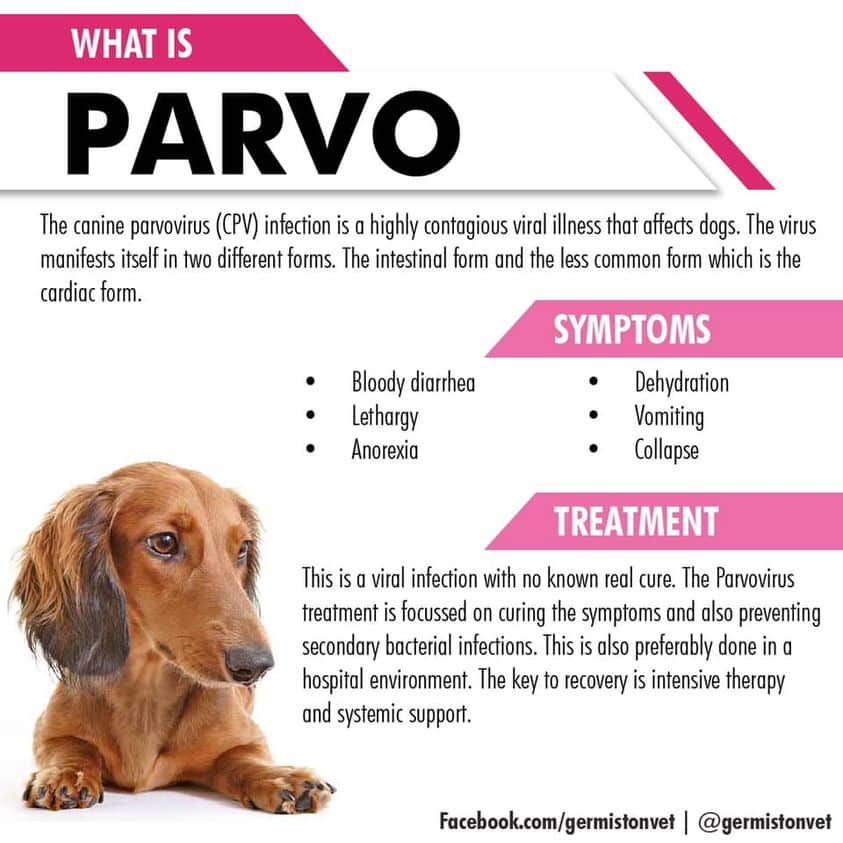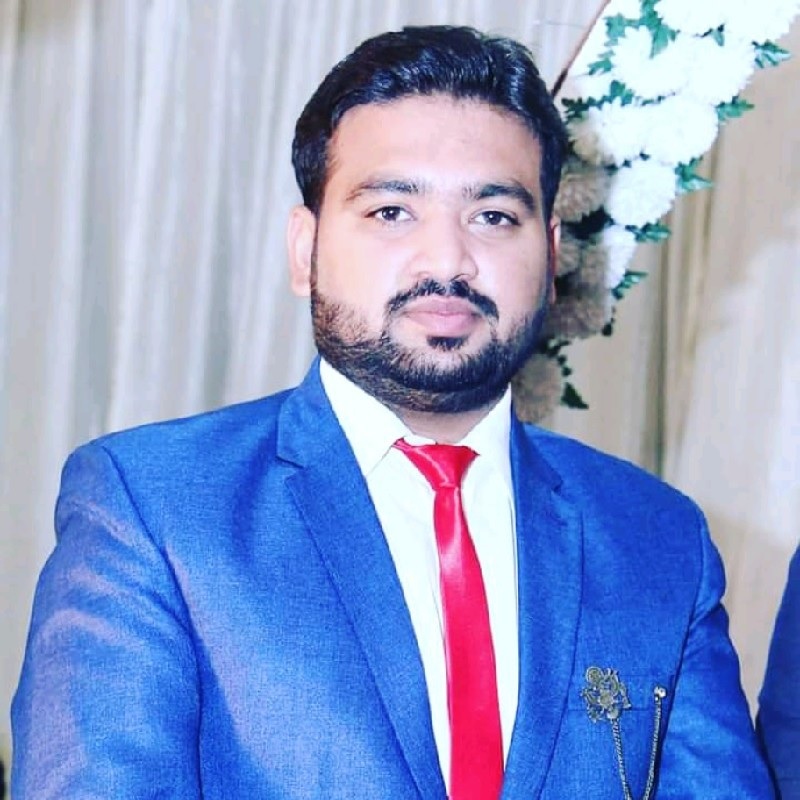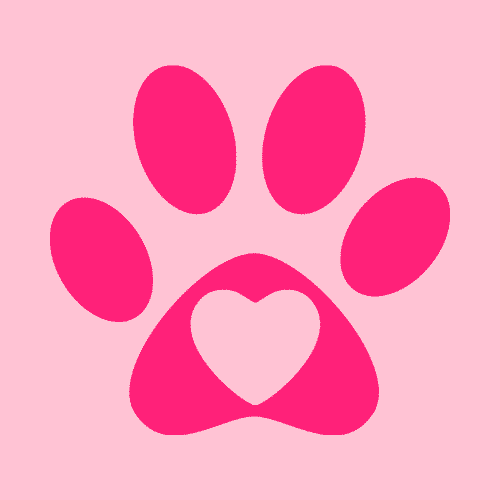Welcome to our article about “how to cure parvo without a vet” Before we get started with this article we want to make clear that we believe that treating Parvo without a trained veterinarian should be an absolute last desperate option. If paying for a veterinarian is not a viable option. You can talk to a professional vet online to get more details. Please kindly note: Cutepetcare.com offers advice based on the best information we can find/provide however we are not a substitute for professional advice.
Parvovirus (parvo) is a life-threatening infection that can strike with little or no warning and you may be wondering how you can treat it without going to the vet.
Getting a new puppy is an exciting moment for both pets and their owners, and you’re both looking forward to plenty of cuddles and fun. You may have already done your homework on proper puppy care, including potty training, diet, and, most importantly, which dog and puppy vaccines your new pet will need. You’ve probably heard a lot about canine parvovirus during your study.
Before discussing the best ways to care for a Parvo-infected dog without a veterinarian, it’s important to remember that Parvo is a fatal disease with no cure. Although professional veterinarian treatment is advised, there are some things you can do to help your dog if you can’t get it to the vet. These aren’t guaranteed to work in every case, but they may be able to help your dog feel better.
Symptoms of Parvovirus
A puppy with parvo is very sick. The quicker you notice the first signs of the virus in puppies, the sooner you need to take care of it. You should also be aware of any specific signs of parvo in puppies, some of them are listed here:

- Bloody diarrhea
- Vomiting
- Fever
- Tiredness
- Anorexia
- Losing weight
- Weakness
- Dehydration
- Depression
All of these symptoms are serious on their own and could be a sign of parvo or some other severe disease.
Treating Parvo Best Outcomes vs. Affordability
Treatment for parvo varies depending on the severity of your dog’s symptoms and whether or not they need to be hospitalized.
The best course of action is to let them stay for a few days at home. You can get your dog continuous intravenous (IV) fluids and injectable treatments that have a better success rate. Having a parvo-infected dog on IV fluids can make a big difference.
To care for a dog, you must be willing to put in a lot of time and effort, as well as be prepared to lose your pet. Your confidence in your ability to accomplish this should be sky-high. Research about the hazards and poor success rate before deciding whether or not this is the best option for your pet.
Home Remedies for Treating Parvo
Parvo is deadly if it is not treated, especially for puppies. You can save money on treatment costs by giving follow-up care at home.
Fluids
You can get an IV line and a supply of needles from drug stores. You will need to connect the IV line to the bag and mark on the bag how much fluid you should give your pooch each day. To determine how much to give, consider your dog’s weight in kilograms.
You will give your dog the prescribed amount of fluids beneath the skin each day. Between their shoulder blades, the skin is the most supple, so this is the greatest area for it. You’ll begin by inserting a new needle into the IV line. The needle should be injected at a 45-degree angle with one hand lifted off the dog’s skin.
It’s time to let the liquids out! Be careful not to overfeed your dog by giving more than the amount. Your dog needs a lot of fluids to stay hydrated. Dehydration is the most common cause of death in dogs with parvo, so make sure to provide plenty of fluids every day.
Antibiotics
You can give your dog an injection of antibiotics. Antibiotics should be given to your dog for at least seven to fourteen days. As a general rule, you’ll have to squirt it into their mouths and softly blow air into their nose to get them to swallow.
If your dog is still eating, that’s great; you can give it the antibiotic disguised as food. Antibiotics should be taken twice a day for the rest of their course. But, if your dog is particularly nauseated, this could be a challenge. A few hours after giving anti-nausea medication, administer the antibiotic to counteract nausea.
Because your dog is suffering secondary bacterial infections, it will need to take antibiotics. The usual bacteria in their intestines begin to cross over into their bloodstream as soon as the virus affects their gut.
Antibiotics assist to prevent your dog from contracting a potentially fatal bacterial infection in their bloodstream.
Anti-diarrheal Medications
Adding anti-diarrheal drugs and trusted vet-approved probiotics to your dog’s treatment plan will also help slow down the rapid loss of fluid and help restore gut flora balance during parvovirus infection. Probiotics can assist to restore the usual balance of gut flora, which will be disrupted during your dog’s battle with parvovirus infection.
Medications to Prevent Nausea
Your dog will benefit greatly from taking this medication since it will make them more comfortable and encourage them to eat. You’ll most likely be able to take the drug by mouth once or twice a day for the anti-nausea medication.
However, you can get an injectable form of the anti-nausea drug if you are comfortable administering an injection under your dog’s skin, which may sting a bit. Because you know your dog won’t vomit the medicine back up, this is a good thing.
Pain Medications
The best way to get your dog back on the road to recovery from parvo is to alleviate his or her painful intestinal cramps so that it can eat more frequently. However, human analgesics should not be given to your dog.
Easily Digestible Foods
Getting your dog to eat is the most difficult but essential part of getting them to stop vomiting.
Small cans of easily digestible food, such as 1/2 to 1 tbsp, should be given to them every 2 hours. You can get a few cans of this special food from your local pet stores. Your dog’s intestines will mend, the gut will return to normal motility, and they will have more energy.
Treating Parvo in Isolation
If you decide to risk treating your dog at home, you’ll need to confine it to a single room and designate a specific spot in your yard for it to discharge itself.
As a result of parvo’s high contagiousness, you should avoid spreading it to other dogs, whether indoors or out. Once their symptoms have subsided and they are back to normal, they should be kept in isolation.
How Do I Know if My Dog Is Getting Better From Parvo?
Your dog is becoming more attentive and active! Both the vomiting and diarrhea have ceased, and your fur baby is eating and drinking properly. Your dog’s poo is no longer bloody when it does eliminate.

As his formerly inexhaustible energy reserves recover, the once sick dog is starting to play again!
- No more vomiting
- Feces is natural.
- Appetite/eating habits return
- Activity levels rise.
- Increasing water consumption
Post-parvo Tips
Even if your puppy seems to be improving, you should not count on being free of the threat of parvo.
A puppy’s ability to shed the virus can last for up to four weeks after the symptoms of diarrhea have subsided. And parvovirus can remain in the environment for up to a year. Two things must be done to help prevent the spread of parvo.
1. First, Stay at Home.
For the duration of your dog’s illness and for the first four weeks after his diarrhea has stopped, keep your puppy indoors and in your yard. Your dog will be protected from catching parvo if you let them stay at home.
2. Sanitize the Environment Around Your Puppy
You’ll need to be extremely careful with parvo because it can survive in your environment for up to a year. Keep your puppy’s place clean and sanitized on a regular basis including the following:
- Bedding
- Food and water bowls
- Poop areas
- The floors and other surfaces in your house
If you can’t keep your other dogs away from certain areas, this will protect them as well.
Prevention Is the Key!
The canine parvovirus, or parvo, is one of the most serious viruses that can infect your puppy or adult dog. Anyone who comes into contact with poo from an infected dog is at risk of contracting parvovirus. Parvo can be deadly if you don’t know how to avoid it.
The good news is that preventing parvo isn’t complex! Here are some ways to keep your dogs from contracting parvovirus.
Give Them a Vaccine
Vaccinating your dog is the best approach to avoid parvo. A puppy’s first treatment should take place between six and eight weeks old. Every three weeks until they’re 16 weeks old, they will need boosters. In light of the virus’s high transmission and harmfulness, your dog will require a second booster and subsequent booster doses each year after their first.
Avoid Contact With Dogs That Have Not Been Vaccinated.
Without exposure to uninfected dogs, your dog has virtually no risk of contracting parvo. Your dog should not be brought into contact with any other animals until it has had his or her first two vaccinations.
If you can’t keep your dog inside, you should at least avoid dog parks and pet stores and restrict your dog’s exposure to other canines.
Maintain a Clean Home
Parvo doesn’t spread via air, which is great news! There’s a downside: It can survive on a surface for more than a year and is tough to remove. Because regular soaps and disinfectants won’t get rid of parvo, you’ll have to use a bleach solution to disinfect your house. To get rid of the virus, dilute a half-cup of bleach in one gallon of water and use it to clean your home.
Dog Panting & Restless? Understanding Hypervigilance In Dogs
How to Cure Parvo Without a Vet – The Bottom Line
When it comes to dealing with parvo naturally, be committed to your beliefs. Treating your puppy at home is a BIG possibility and responsibility.
Keep in mind that you have to be 100% devoted to this job. You’ll have to provide their medications and treatments on a continuous hourly basis, 24 hours a day, seven days a week. Keep a journal to record the medicines you’ve given your dog and how it’s responding to them.
It might be difficult, yet satisfying, to treat your puppy’s parvovirus at home.
We advise treating your pup with a well-trained veterinarian at all costs. Home treatment should only be a last resort.

Veterinarian (DVM, MS) Content Writer, Blogger, and WordPress Developer. Working as a pet/animal/bird/fish/reptile/wildlife writer for the past 7 years on many renowned platforms.





